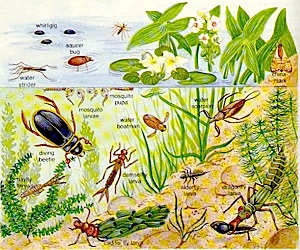Pesticides applied in agriculture can affect the structure and function of nontarget populations at lower doses and for longer timespans than predicted by the current risk assessment frameworks. We identified a mechanism for this observation. The populations of an aquatic invertebrate (Culex pipiens) exposed over several generations to repeated pulses of low concentrations of the neonicotinoid insecticide (thiacloprid) continuously declined and did not recover in the presence of a less sensitive competing species (Daphnia magna). By contrast, in the absence of a competitor, insecticide effects on the more sensitive species were only observed at concentrations 1 order of magnitude higher, and the species recovered more rapidly after a contamination event. The underlying processes are experimentally identified and reconstructed using a simulation model. We conclude that repeated toxicant pulse of populations that are challenged with interspecific competition may result in a multigenerational culmination of low-dose effects.
Source: Liess et al. Environ. Sci. Technol. 2013, 47, 8862−8868
dx.doi.org/10.1021/es401346d

- Login om te reageren
